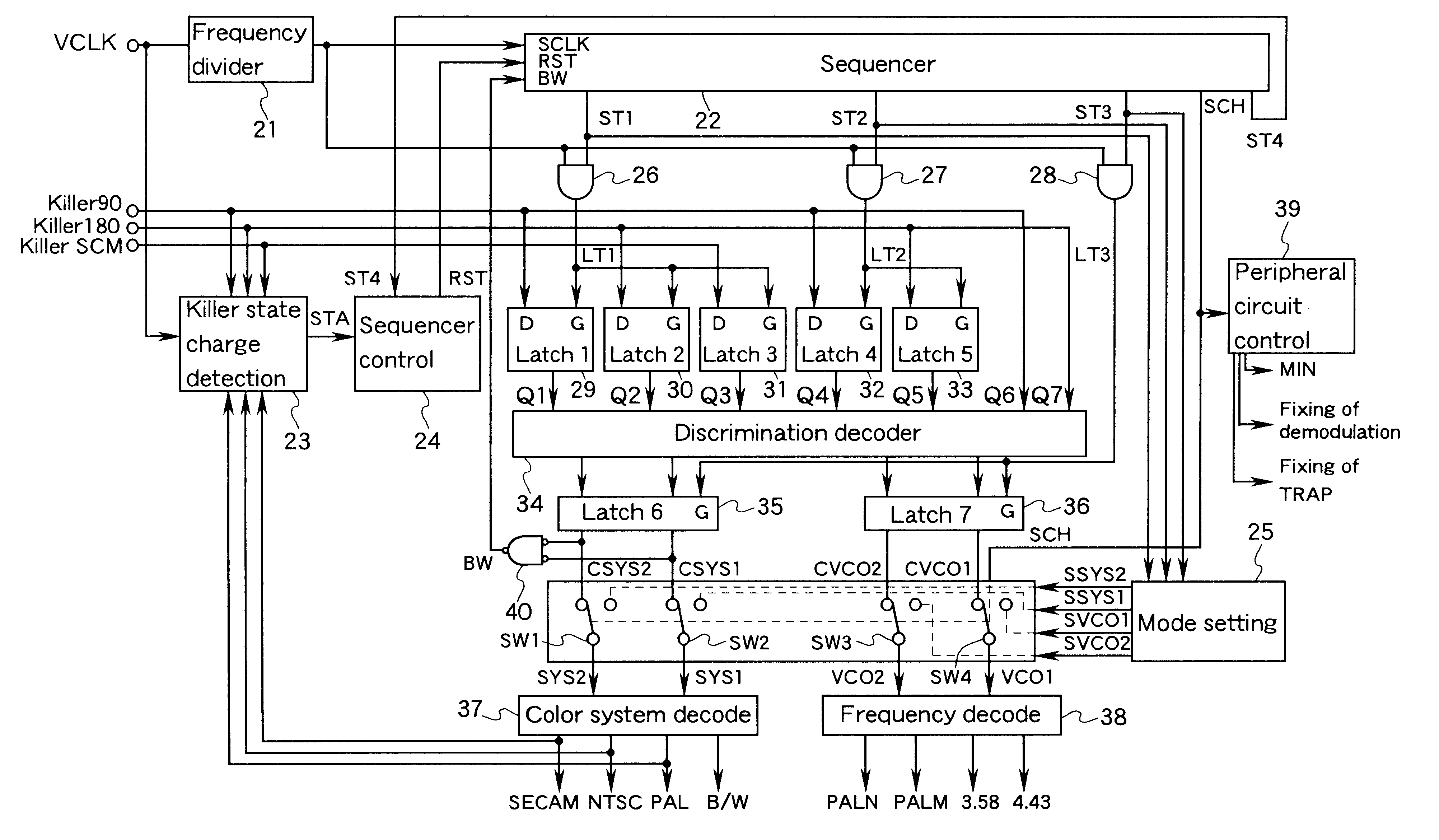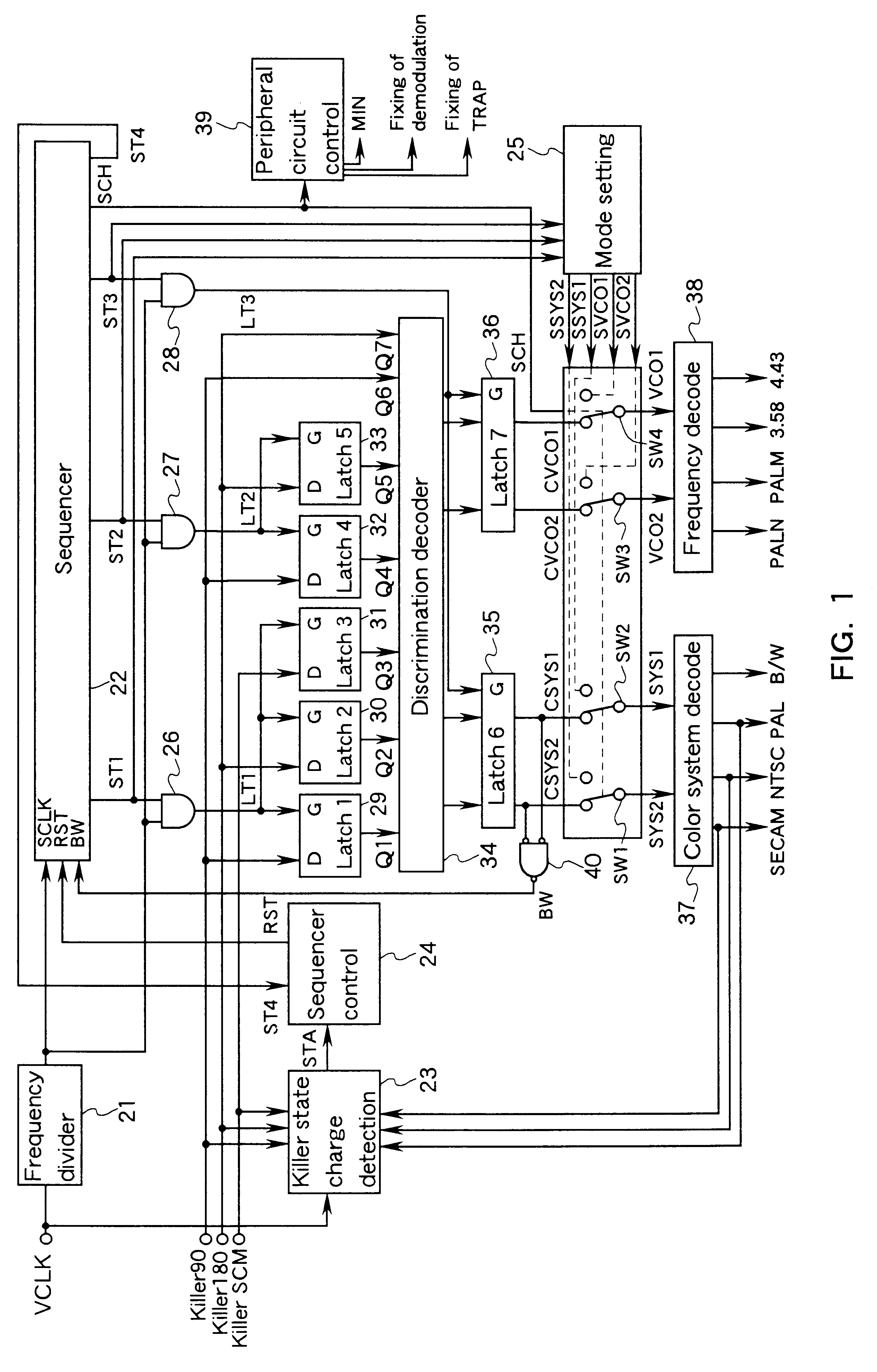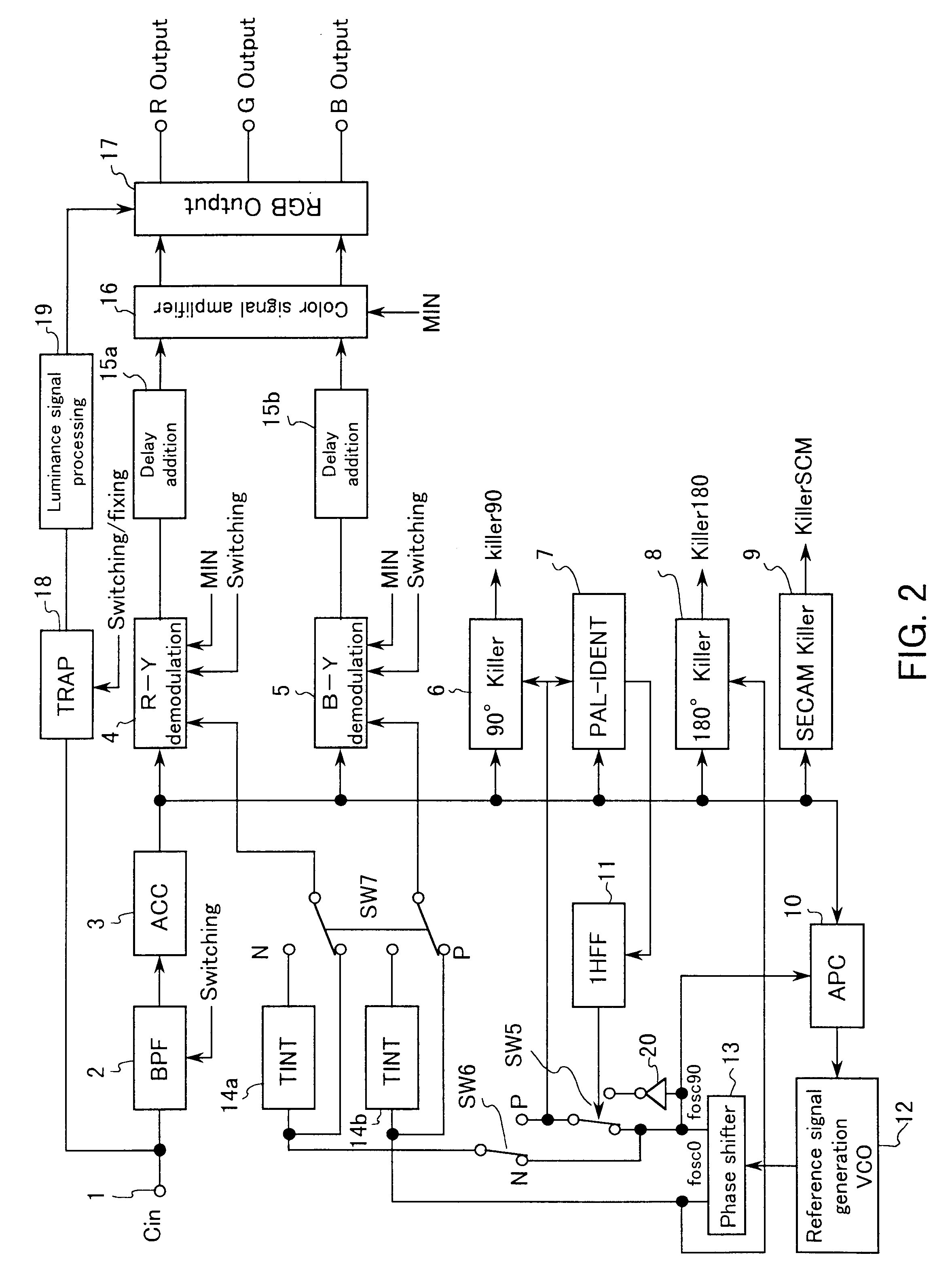Color transmission system discrimination circuit in television set
a color transmission system and discrimination circuit technology, applied in the field of color transmission system discrimination circuit in television sets, can solve the problems of affecting the correct setting of the color transmission system, and affecting the appearance of the screen, so as to prevent the disturbance of the screen and the appearance
- Summary
- Abstract
- Description
- Claims
- Application Information
AI Technical Summary
Benefits of technology
Problems solved by technology
Method used
Image
Examples
embodiment 1
FIG. 1 is a block diagram showing a color transmission system discrimination circuit in Embodiment 1 of the present invention. FIG. 2 is a block diagram showing a peripheral circuit of the color transmission system discrimination circuit, i.e., a circuit for switching various settings in accordance with a color transmission system. First, the circuit shown in FIG. 2 will be described.
Referring to FIG. 2, a video composite signal C.sub.in input through an input terminal 1 is input, through a band-pass filter (BPF) 2 and an automatic color control circuit (ACC) 3, to an R-Y demodulation circuit 4, a B-Y demodulation circuit 5, a 90.degree. killer signal detection circuit 6, a PAL-IDENT circuit 7, a 180.degree. killer signal detection circuit 8, a SECAM killer signal detection circuit 9, and an APC circuit 10 forming a reference signal generation circuit. The BPF 2 is switched in accordance with a color transmission system; that is, one is selected from the following three: a BFP for 4...
embodiment 2
In a color transmission system discrimination circuit in Embodiment 2 of the present invention, discrimination is performed by using a software program. Provisional color transmission systems are successively set in three stages, and a color transmission system is determined based on three killer signals thus obtained. This is the same as that in Embodiment 1. The present embodiment will be described with reference to flow charts in FIGS. 7 and 8.
At Step S1 in FIG. 7, it is checked whether or not a killer signal is changed. This corresponds to the function of the killer state change detection circuit 23 in Embodiment 1 shown in FIG. 1. Next, at Step S2, it is detected whether or not a color transmission system is for the European countries. If it is for the European countries, Step S3 and the subsequent steps are conducted. If it is not for the European countries, i.e., if it is for South America, Step S12 and the subsequent steps in FIG. 8 are conducted. Whether or not it is for th...
PUM
 Login to View More
Login to View More Abstract
Description
Claims
Application Information
 Login to View More
Login to View More - R&D
- Intellectual Property
- Life Sciences
- Materials
- Tech Scout
- Unparalleled Data Quality
- Higher Quality Content
- 60% Fewer Hallucinations
Browse by: Latest US Patents, China's latest patents, Technical Efficacy Thesaurus, Application Domain, Technology Topic, Popular Technical Reports.
© 2025 PatSnap. All rights reserved.Legal|Privacy policy|Modern Slavery Act Transparency Statement|Sitemap|About US| Contact US: help@patsnap.com



